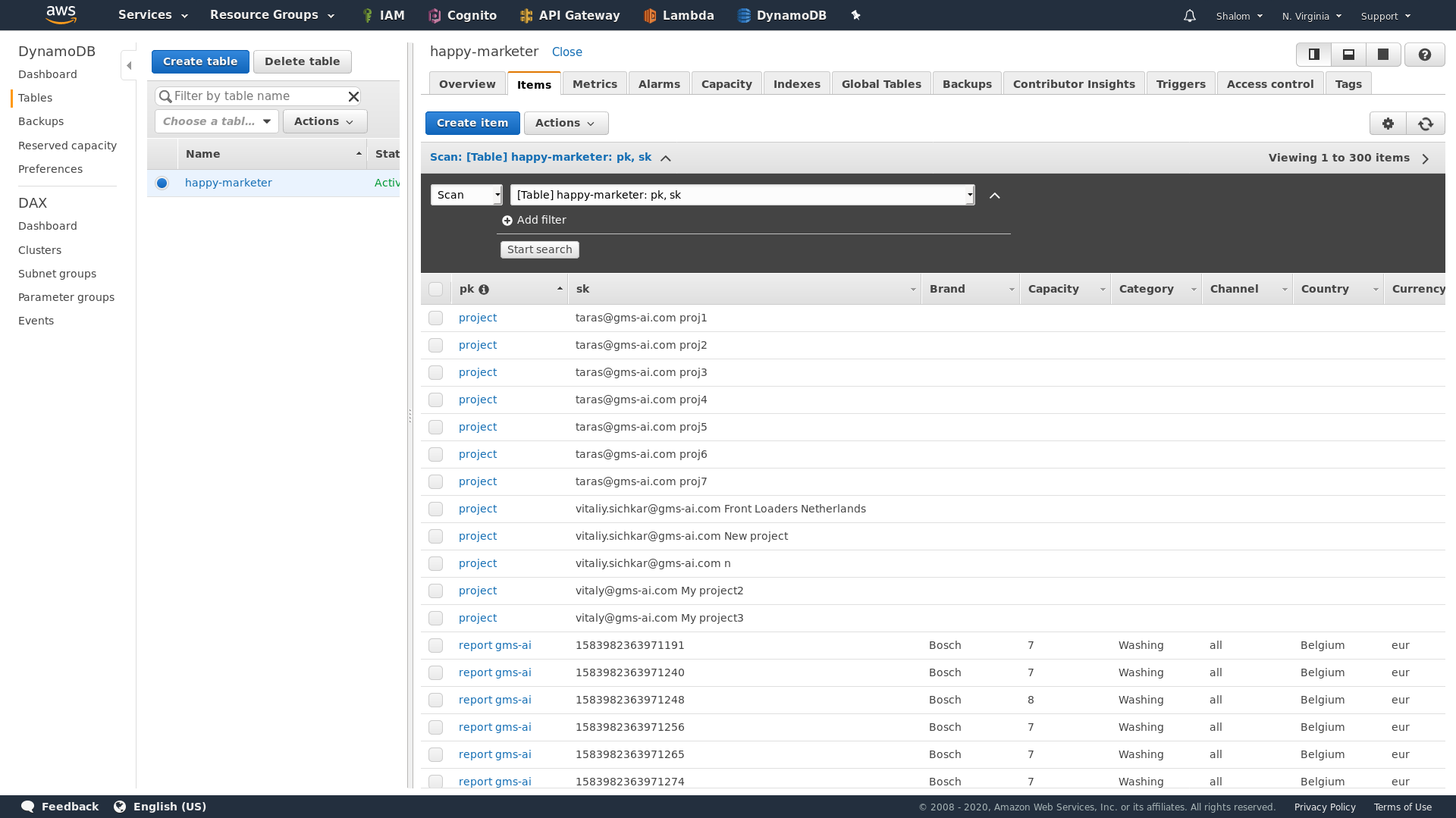Amazon DynamoDB
About Amazon DynamoDB
Amazon DynamoDB Pricing
Amazon DynamoDB is offered across two pricing plans: On-demand capacity and Provisioned capacity. Contact Amazon Web Services for more details.
Free trial:
Available
Free version:
Available

Most Helpful Reviews for Amazon DynamoDB
1 - 5 of 19 Reviews
Pawe
Verified reviewer
Computer Software, 1,001-5,000 employees
Used daily for less than 2 years
OVERALL RATING:
5
EASE OF USE
4
VALUE FOR MONEY
5
FUNCTIONALITY
5
Reviewed August 2022
DynamoDB for Big Data Processing
I have used DynamoDB in dozen of projects, including the commercial medium-scale applications and University Research projects that included processing massive amount of data. DynamoDB is my go-to solution for NoSQL Databases, it is very easy to configure and the documentation is near perfect. An experienced Engineer who has worked with Databases before will grasp most of the features in a couple of weeks. DynamoDB is a fantastic solution that automatically scales and is able to process large amounts of data.
CONSWhen used very intensely the cost do rise, but still the costs are comparable to other Cloud Providers' NoSQL solutions like Cassandra, GCP BigTable etc.
Reasons for switching to Amazon DynamoDB
I wanted to move my entire infrastructure to AWS.
Anonymous
201-500 employees
Used weekly for more than 2 years
OVERALL RATING:
5
EASE OF USE
3
VALUE FOR MONEY
4
CUSTOMER SUPPORT
5
FUNCTIONALITY
5
Reviewed July 2022
Java developer on Amazon DynamoDB.
A great scaling NoSQL database on the AWS platform. Easy to administer once you're already using AWS. Integrates great with other services on the platform. Easy to configure security.
CONSLimited data querying. High entry threshold. Requires understanding because of its differences. It's more difficult with integration when you're not using the AWS platform.
Reason for choosing Amazon DynamoDB
In the project I was working on, we were already using Amazon's platform. It was easy to use DynamoDb and integrate it with existing services.
Shaurya
Computer Software, 501-1,000 employees
Used weekly for less than 2 years
OVERALL RATING:
3
EASE OF USE
3
FUNCTIONALITY
3
Reviewed September 2022
Small and Simple AWS offering for managing no sql databases
Easy to use tool which is fully managed and has a lot of documentation available. Continuously evolving tool with great scalabality. Integrates easily with a lot of other AWS tools
CONSCannot beat other no sql dbs in terms of functionalities. Cannot perform complex joins, cannot create views easily
Anonymous
10,000+ employees
Used daily for less than 2 years
OVERALL RATING:
4
EASE OF USE
3
VALUE FOR MONEY
3
CUSTOMER SUPPORT
3
FUNCTIONALITY
5
Reviewed April 2022
A Flexible way to do NoSQL databases on AWS
Despite the learning curve, and some initial problems with unknowingly attempting to use reserved words as keys, DynamoDB has been stable and performant since it has been deployed to production.
PROSDynamoDB and NoSQL databases in general are really flexible in terms of what and how you store your information. The JSON structure of data makes is easy to work with when integrating with other services like AWS Lambdas and AWS API Gateways.
CONSThere is a steep learning curve for someone coming from a SQL/relational database background. Lots of weird optimization tricks. AWS does not do a good job about letting you know if you accidentally use a reserved word (things just break).
Reason for choosing Amazon DynamoDB
We were developing a new API that needed to be able to read and write data. We were unsure what the final data structures would look like, so DynamoDB gave us flexibility in the data structure during development.
Anonymous
1 employee
Used daily for more than 2 years
OVERALL RATING:
4
EASE OF USE
4
VALUE FOR MONEY
3
CUSTOMER SUPPORT
4
FUNCTIONALITY
5
Reviewed February 2023
Amazon DynamoDB for any application that requires fast and scalable NoSQL database services
I highly recommend Amazon DynamoDB for any application that requires fast and scalable NoSQL database services. Its ease of use, performance, and integration with other AWS services make it a top choice for many organizations. Just be aware of the costs associated with the service and plan accordingly.
PROSOne of the biggest benefits of DynamoDB is its scalability. You can easily scale up or down based on your needs, and the service will automatically handle the management and distribution of your data across multiple servers
CONSWhile DynamoDB integrates well with other AWS services, it may be more difficult to integrate with non-AWS services or tools.
